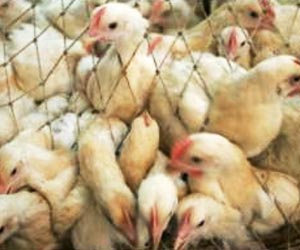Scientists at the High-Security Animal Disease Laboratory in Bhopal have finally helped to materialize India's dream of developing an effective poultry vaccine against the deadly H5N1 bird flu virus last month. However, several obstacles lay in the path of finding a company to manufacture the vaccine.
This is because there is not a single Indian vaccine manufacturer who deals with influenza vaccines for poultry who has a Bio Safety Level (BSL) 3 lab, needed to house the live H5N1 bird flu virus to manufacture the vaccine.The process of manufacturing the vaccine involves housing the live H5N1 virus first, isolating it, manufacturing it in bulk before killing it to make the vaccine.
Although scientists at the Bhopal lab, which is India's only BSL 4 lab for animal research, the highest level of bio-containment, has received offers from four vaccine manufacturers in the country, proposing the transfer of the technology, none of them has the required facility to cultivate the virus.
According to scientists the live virus, which is presently in their possession, cannot be transferred to a lab below BSL 3 status because the virus may slip into and mix with an open environment thereby creating havoc.
Lab chief H K Pradhan said, "Most of the companies have a Clean Room the ability to handle the virus after it is killed. However, none of them can house a live virus, which is an absolute necessity to develop this bird flu vaccine. No lab also has a containment system that can stop the virus from leaking out and mixing with the environment."
In a BSL 3 facility, design is a significant factor in safety because it involves organisms that pose a serious threat to humanity. These are usually constructed air tight with negative air pressure. BSL 3 labs require researchers to wear "moonsuits" inside air locked labs.
Advertisement
The Indian scientists had developed the vaccine using the most potent strains of H5N1 virus that had hit the country in February. On June 16, Agriculture minister Sharad Pawar had announced that tests have shown this vaccine to provide 90% protection against the most virulent form of H5N1 virus.







